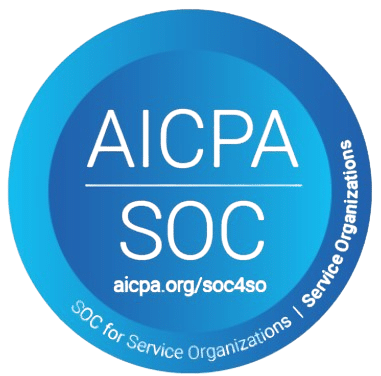The underwriting phase in the home-buying journey is the most important step, but it can be pretty time-consuming, stretching up to a month or even more. Everyone, from borrowers and loan officers to underwriters, wants a quick and successful way out. As a MLO (Mortgage Loan Originator), some strategies can help stir the underwriting process.
Ensuring a quick, smooth, and streamlined loan process is crucial for being a successful loan officer. Implementing these practical tips can significantly accelerate the underwriting process, facilitating faster loan closing and maintaining efficiency during peak mortgage volumes.
Can A Loan Officer Override Underwriting?
No, loan officers can’t influence the underwriter since both teams have separate responsibilities. However, a loan officer can help speed up the underwriting process by following a number of techniques discussed below.
7 Tips to Help MLOs Speed Up The Underwriting Procedure
1. Present the Most Updated Client Information
As a loan officer, one of the most important things that will accelerate the underwriting process and increase the chances of successful mortgage loan approval is providing your client’s correct and most recent information. The data you provide to the underwriter for examination should be accurate and verifiable. This means that if your client moves to a new place or gets divorced, the information should be updated in the application that you submit, and there should be documents present as proof of changes.
The changes may seem minor but can significantly impact your mortgage loan approval decision.
2. Write a Cover Letter to Submit to Underwriter
Writing a single-page cover letter can expedite the underwriting process, make you better at reviewing loan applications, and help you become a smarter MLO.
Write a clear summary of the borrower’s information, including income, credit score, assets, and appraisal. Also, if there’s something unique about the loan application, you can make a note of this, as this will save you a lot of time later. This short and precise overview will give the processors and underwriters an immediate identification of what they will be dealing with, helping them prepare and organize. The underwriting team will acknowledge your efforts and thank you.
No one expects you to write a detailed or complex cover letter; make it simple and to the point. Add your name, contact, and employer info, and write a few sentences explaining the loan. Now list the data related to the loan– number, type, and the borrower’s information stated above. If you wish, you can also add your notes on why you expect this loan to be approved.
3. Stay Updated on Guidelines
MLOs should keep up-to-date with loan regulations. Instead of relying on memory, check AUS (automated underwriting system) reports and review guidelines for specific loans like construction-to-permanent, two-close, or jumbo loans. Remember the document expiration dates when collecting information to avoid making extra requests from applicants before closing.
Make sure the dates on credit reports, bank statements, and year-to-date financial statements follow the necessary guidelines. Get the usable documents beforehand to make the whole process easier and faster.
4. Advise Your Clients to Maintain the Initial Credit Profile
As a responsible mortgage loan officer, it’s part of your job to help make your clients’ loan process go smoothly. It includes advising the borrowers not to do anything that can impact their credit score. Ensure you remind your clients that any major purchases like a new car, applying for other loans, or quitting their job can negatively affect their application during the underwriting process. It’s important to maintain the initial credit profile that your client applied for the loan with. Getting new lines of credit doesn’t mean your loan will be denied, but it can delay the process.
5. Communicate with Underwriter & Borrower
As a loan officer, you need to establish clear communication with the lending side (underwriter) and the client (borrower). You don’t need to be overly involved but maintain frequent touch with the underwriter. Maintaining regular and respectful communication is an excellent way to make the underwriting process smooth and can also help accelerate it.
Many borrowers, mostly first-timers, have no idea about the underwriting process. They may find it odd that the underwriters keep asking for the same information multiple times. Tell your clients that re-verification of information is normal, and they should immediately provide the requested data so things keep moving forward.
6. Prepare Positive Explanation for Items Affecting Credit Score
Finding a negative report on your credit file can make the underwriter worried. So it’s important to explain each and everything that might be a concern. Clarify things like employment gaps and big deposits before the application goes under review. No matter if you feel it is a small or big issue, it’s good to give some background knowledge before the application goes to the underwriter.
7. Use Technology to Make Processes Quick
As a loan officer, you can leverage mortgage technology to speed up the underwriting process. Digital forms can help MLOs gather data from applicants quickly and easily. Automated document collections and verification help avoid time-consuming and error-prone manual paperwork, helping speed up loan application review without compromising data integrity and security.
Once the necessary information is collected, loan officers can utilize technologies like a business intelligence tool or mortgage CRM to send the required data to underwriters. This will also make it easy for you to share the documents between the underwriter and client, and you can monitor the entire loan process.
Conclusion
By following these seven techniques, loan officers can easily speed up the underwriting process. As a MLO, you can begin with slight changes and adapt as things move in the right direction for your client. Adopting new ways to be more productive and efficient will make the underwriting process smoother and faster. As a loan officer, if you are more organized in preparing your loans for underwriting, you will definitely be successful in closing a higher number of mortgage loans and enjoy a happier clientele.
If you need more information on how to make better use of your loan origination system or leverage the automation tools to your advantage, reach out to our mortgage process automation experts at 877-284-4968.












